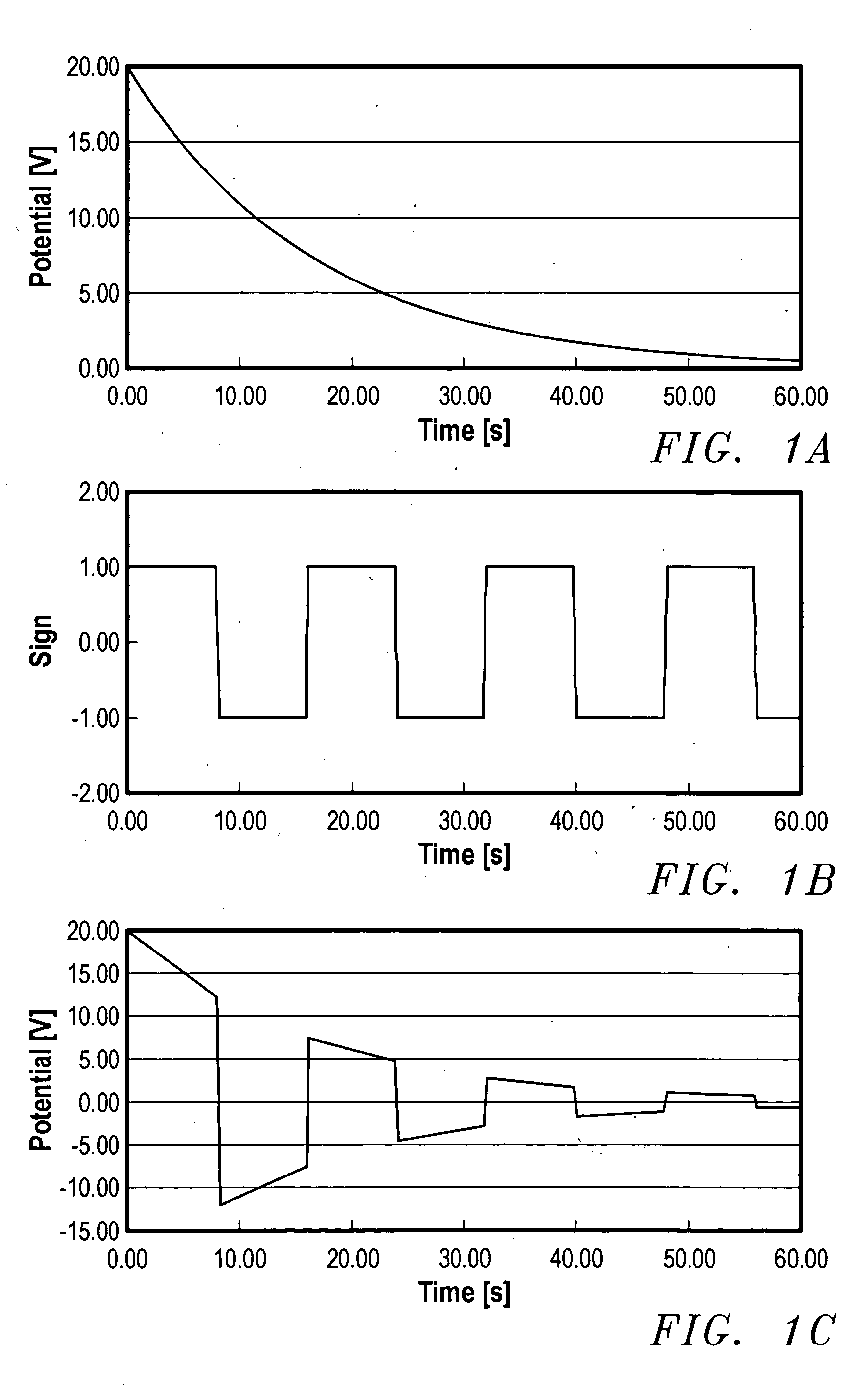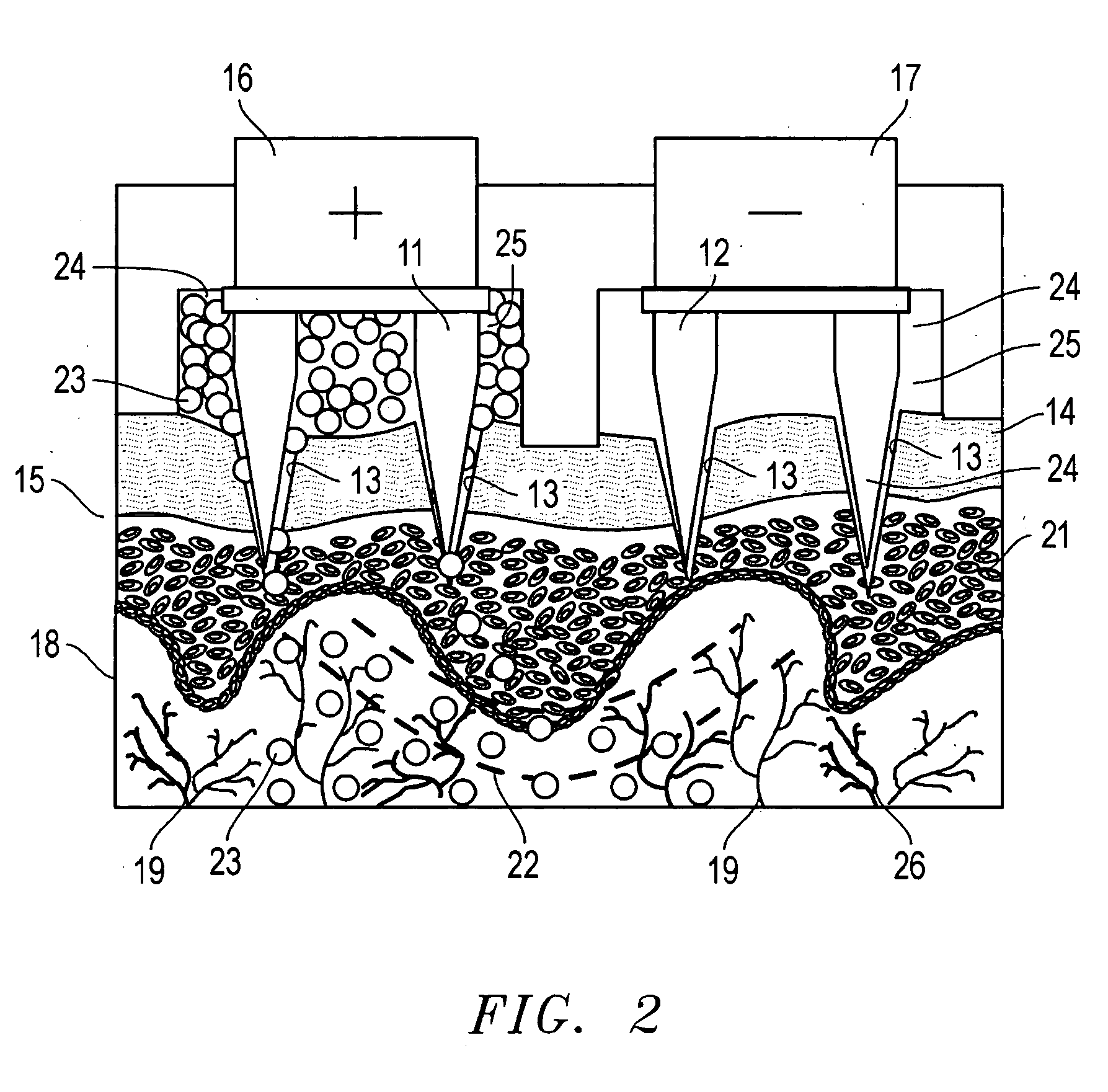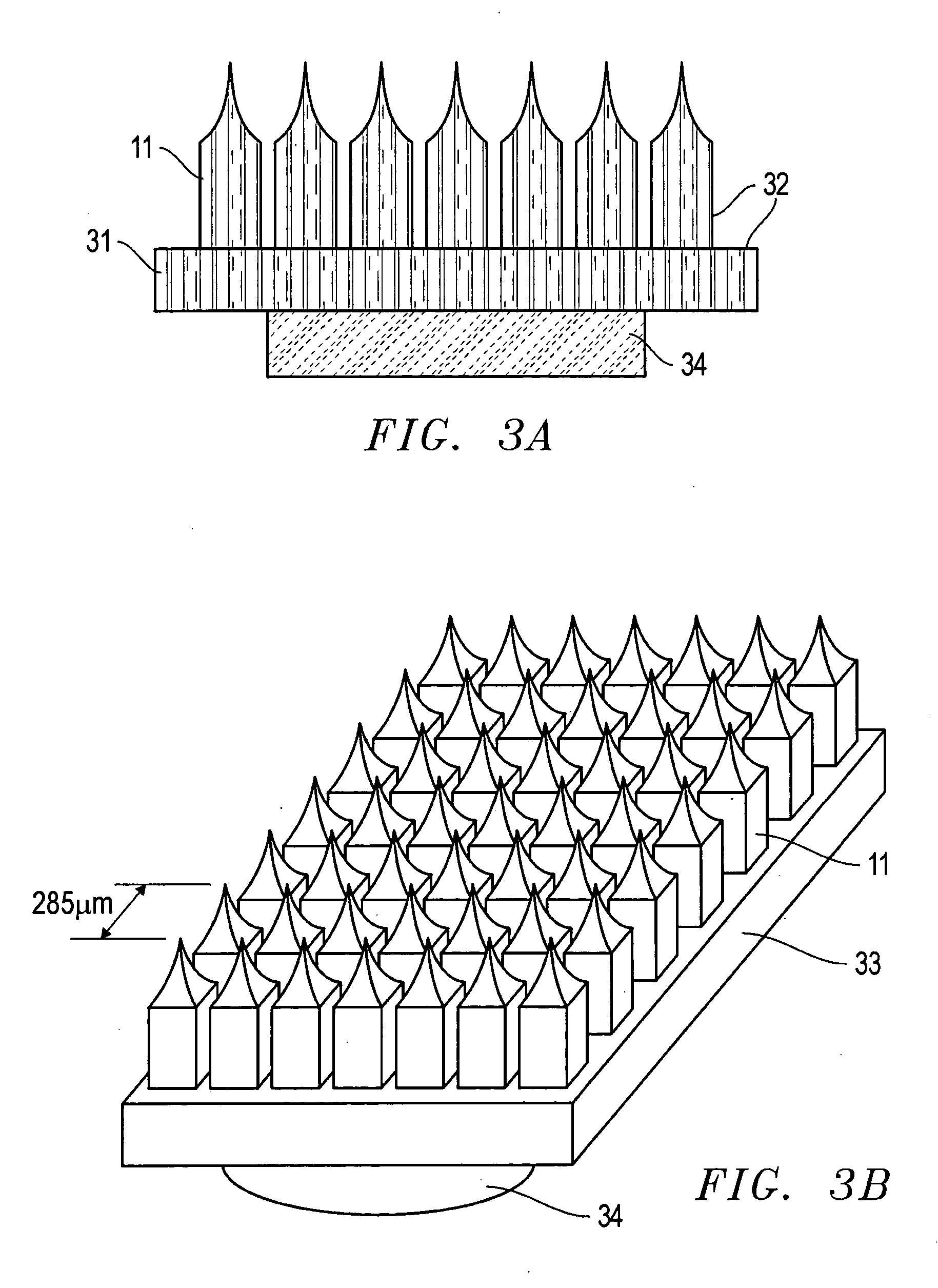Transdermal delivery of therapeutic agent
a technology of therapeutic agents and transdermal delivery, which is applied in the field of medical devices, can solve the problems and achieve the effect of painless delivery of therapeutic agents
- Summary
- Abstract
- Description
- Claims
- Application Information
AI Technical Summary
Benefits of technology
Problems solved by technology
Method used
Image
Examples
example 1
[0058] Microprojections were prepared using the following method. A small glass vial, having a diameter of about 2.5 cm, was filled with a solution used for electroetching wire into the microprojections. The vial was then closed with a plastic cap containing a septum. The solution used for electroetching depends upon the type of wire used for making the microprojections. For tungsten microprojections, the solution used was 0.1 M NaOH. For platinum microprojections, the solution used was saturated NaNO2 solution. For gold microprojections, the solution used contained 10 g KCN and 5 g KOH per 40 mL of water.
[0059] Three stainless steel needles were inserted through the septum so that the ends were about 5 mm above the solution level in the vial. A length of wire about 5 cm in length and having a thickness of about 0.25 mm, was inserted into the solution through the first needle to a depth of about 2 mm. A second wire was inserted through the second needle and immersed in the solution...
example 2
[0061] A sample of pig's skin taken from a pig's foot was placed on a test cell sandwiched between the lower compartment and the top of the cell. The lower compartment of the cell was filled with 0.1 M phosphate buffer. A set of two arrays of conductive gold microprojections, each array having seven microprojections, was slowly moved towards the skin sample while measuring the resistance between the arrays. When the measured resistance dropped sharply from an open circuit reading to about 800 MΩ, the microprojections were known to be in contact with the skin sample and the reading on the micrometer was recorded as the “zero” location from which a precise penetration depth could be measured.
[0062] The arrays of microprojections were then raised above the skin sample and a suspension of microspheres in phosphate buffer was transferred into two compartments of the top portion of the cell. Typically, a 0.1 mL of suspension containing 10 mg of microspheres was used in each compartment. ...
PUM
| Property | Measurement | Unit |
|---|---|---|
| Time | aaaaa | aaaaa |
| Time | aaaaa | aaaaa |
| Diameter | aaaaa | aaaaa |
Abstract
Description
Claims
Application Information
 Login to View More
Login to View More - R&D
- Intellectual Property
- Life Sciences
- Materials
- Tech Scout
- Unparalleled Data Quality
- Higher Quality Content
- 60% Fewer Hallucinations
Browse by: Latest US Patents, China's latest patents, Technical Efficacy Thesaurus, Application Domain, Technology Topic, Popular Technical Reports.
© 2025 PatSnap. All rights reserved.Legal|Privacy policy|Modern Slavery Act Transparency Statement|Sitemap|About US| Contact US: help@patsnap.com



